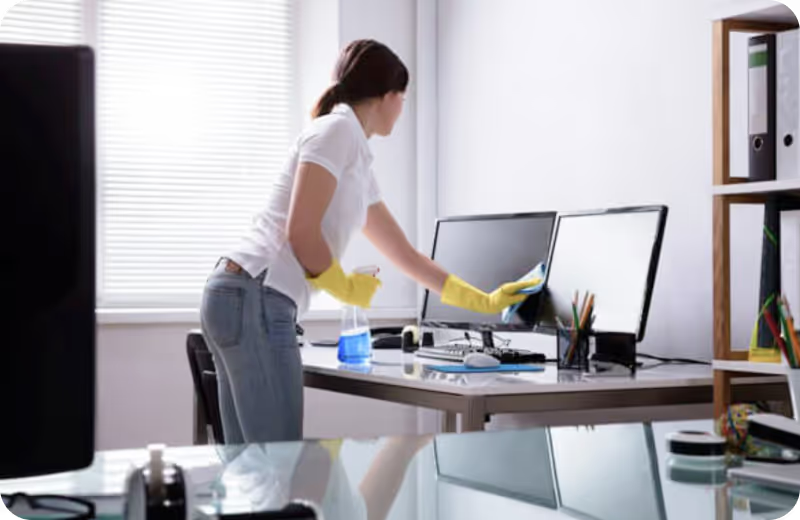.jpg)
In the fast-paced, high-output world of manufacturing, factory managers carry immense responsibility. Ensuring product quality, maintaining worker safety, and maximizing equipment performance all fall under their responsibility. One critical and yet sometimes overlooked aspect of operations is industrial cleaning.
Industrial cleaning is a structured, essential part of facility maintenance that affects everything from worker health to regulatory compliance and machinery lifespan. Whether managing a food processing plant, electronics factory, or metal fabrication site, understanding the importance, scope, and strategy of industrial cleaning is non-negotiable.
This article explores what every factory manager should know about industrial cleaning, including its key benefits, types, techniques, challenges, and how to implement an effective cleaning program.
Why Industrial Cleaning Matters
Worker Health and Safety
Dirt, chemical residues, and shavings or spills in the industrial location can pose significant hazards to employees. Inhaling harmful particles or slipping on unclean surfaces can result in injuries, illnesses, and even legal liabilities.
Proper industrial cleaning helps prevent these risks by maintaining sanitary conditions, removing contaminants, and supporting a healthy atmosphere for the workforce.
Equipment Longevity and Efficiency
Industrial machinery is often expensive and complex. Over time, dust, grime, and chemical residues can accumulate, leading to overheating, corrosion, blockages, and reduced performance. Ensuring that this equipment gets the thorough cleaning it needed, it can help to prolong the lifespan and reduce the frequency of breakdowns.
Product Quality and Consistency
Contamination in the production process, especially in industries like food, pharmaceuticals, and electronics, can compromise product quality. Clean machinery and environments ensure consistent output, uphold product standards, and protect brand reputation.
Regulatory Compliance
Industrial facilities in Singapore and across the world are subject to strict workplace safety and environmental standards. Cleaning helps you stay compliant with regulations from bodies like NEA, MOM, or international certifications such as ISO.
Types of Industrial Cleaning
Routine Cleaning
This includes tasks such as sweeping floors and wiping down surfaces. Cleaning common areas and restrooms should also be included. Though basic, it prevents dirt accumulation and supports general hygiene.
Deep Cleaning
Conducted periodically, deep cleaning goes beyond the surface level. It may involve disassembling machines to remove buildup, cleaning inside air ducts, or washing high-reach areas. This is usually scheduled during maintenance shutdowns.
Equipment Cleaning
Machinery and production lines need targeted cleaning to remove residues, lubricants, and contaminants. Methods vary depending on the type of equipment, such as dry cleaning for electronics or steam cleaning for food production lines.
Hazardous Waste Removal
Factories handling chemicals or manufacturing hazardous products must follow strict protocols for cleaning up toxic substances. This requires specially trained cleaners and often specialized PPE and disposal procedures.
Environmental Cleaning
This involves keeping outdoor areas like factory yards, loading docks, and drainage systems clean. Most time, this is very important to follow through as it is a part of the company's environmental compliance.
Challenges in Industrial Cleaning
- Cleaning often requires halting operations. Balancing cleanliness with production efficiency requires careful scheduling, often during off-hours or planned shutdowns.
- Cleaners must navigate heavy machinery, elevated areas, or chemical exposure. Managers need to ensure that cleaning staff are trained, equipped, and supervised properly.
- Certain industries generate hazardous or regulated waste during cleaning. Improper disposal can harm the environment and result in legal penalties.
Creating an Effective Industrial Cleaning Program
As a factory manager, setting up a robust industrial cleaning plan involves several key steps!
Step 1: Conduct a Cleaning Audit
Begin by mapping out all areas and equipment in your facility. Identify high-risk zones, equipment with cleaning protocols, and environmental or legal obligations.
Step 2: Categorize and Schedule
Divide tasks by frequency—daily, weekly, monthly, or annually, and assign who is the individual responsible for each of the tasks.
Step 3: Choose the Right Tools and Methods
Use appropriate cleaning techniques based on the type of contaminants and surfaces.
Step 4: Train Staff and Promote Awareness
Ensure that cleaning staff understand safety protocols and proper procedures. Likewise, educate other employees on keeping shared spaces clean and reporting hazards.
Step 5: Monitor and Evaluate
Track cleaning activities with logs or checklists. Periodically review effectiveness and adjust plans based on feedback or changes in production needs.
Pro Tip: If internal resources are limited, hiring a professional industrial cleaning company can bring specialized expertise, reduce liability, and ensure compliance.
Conclusion
For any factory manager, industrial cleaning should be seen as an investment and not just an operational requirement. Clean facilities foster safer work environments, prolong the life of machinery, support regulatory compliance, and protect product integrity.
Looking for a trusted partner to handle your factory’s cleaning needs? Luce can be your best option! With over 700 satisfied clients across various industries, Luce Industrial Cleaning Services in Singapore delivers top-tier results at competitive prices.
Contact us today to schedule a consultation or learn more about how we can support your operations with reliable industrial cleaning coverage.









.jpg)
.jpg)
.jpg)

.jpg)












